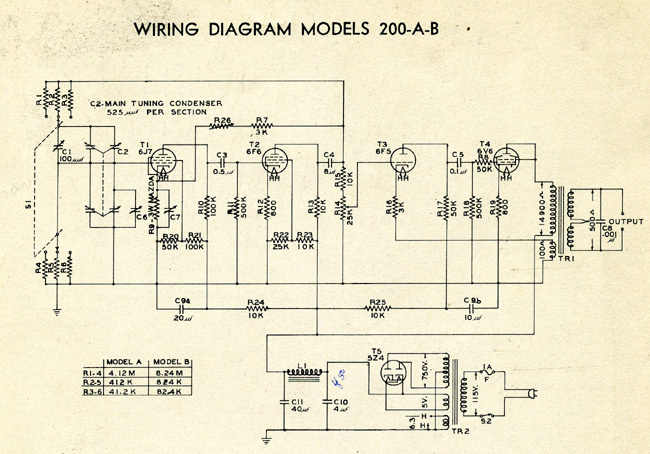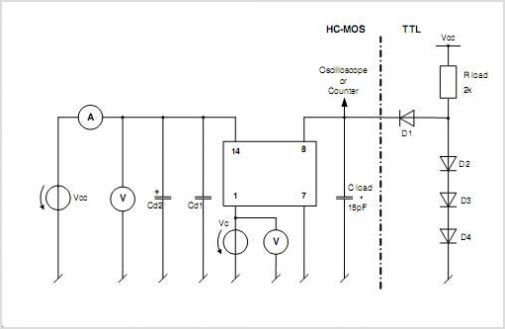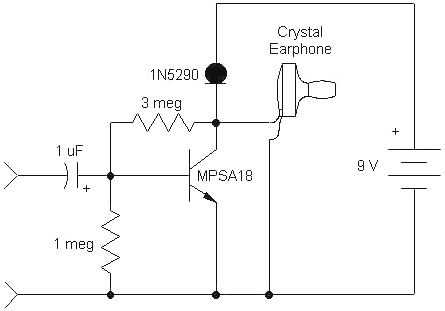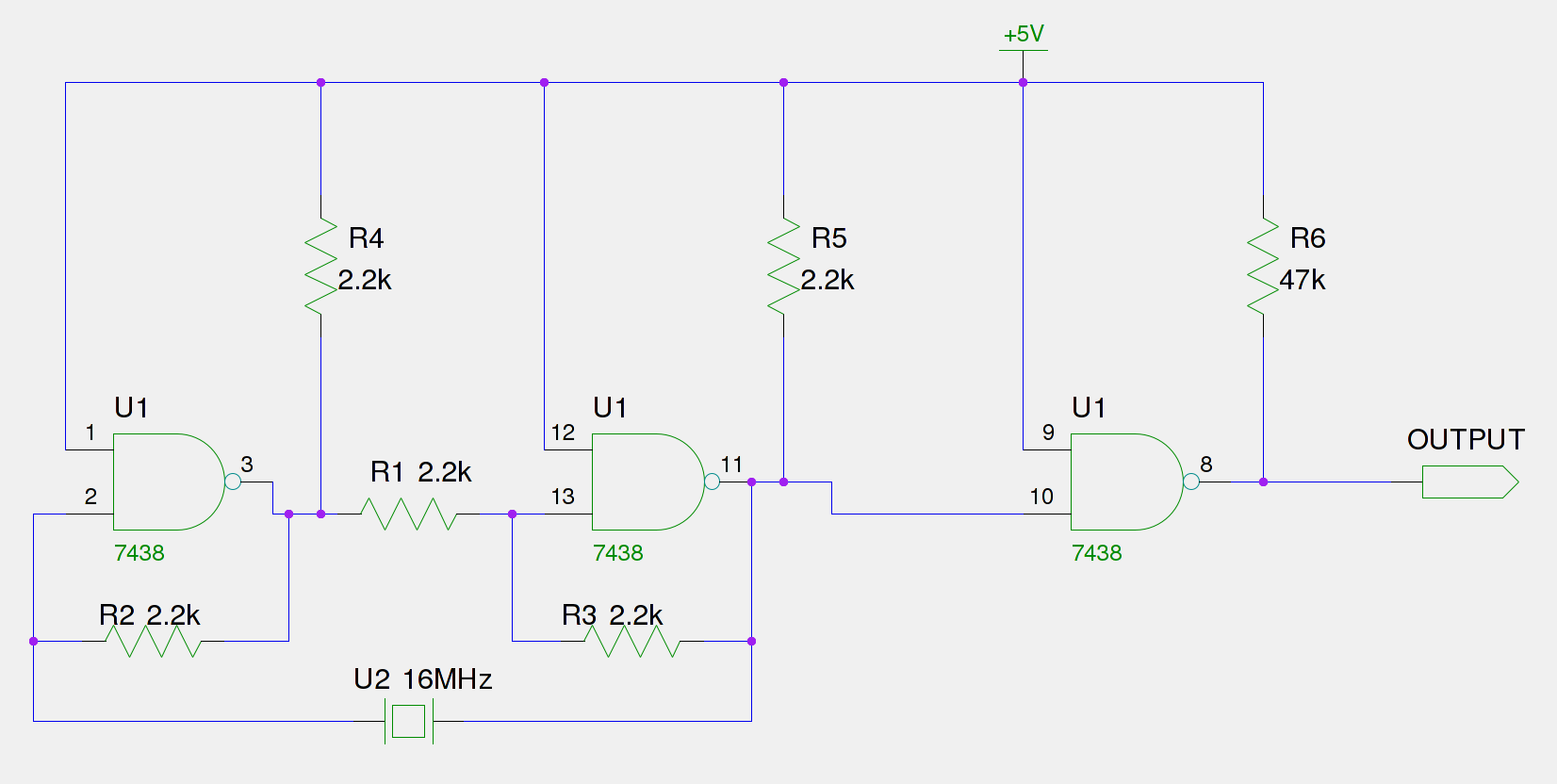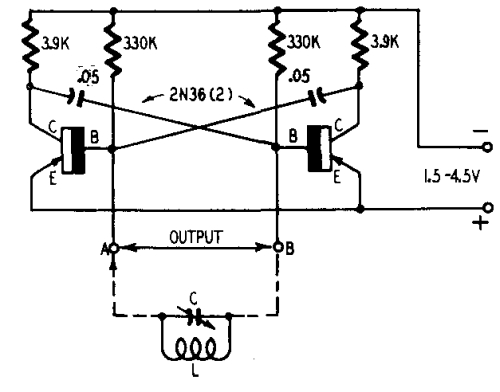
HCMOS Crystal Oscillators
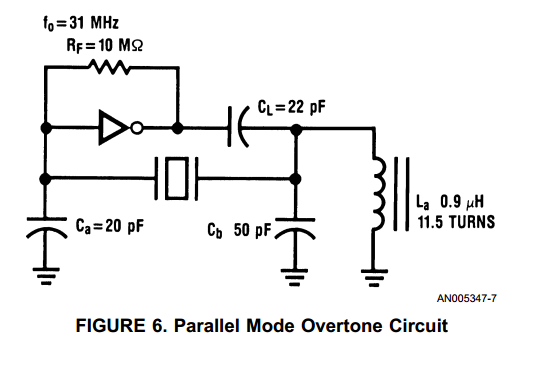
With the advent of high speed HCMOS circuits, it is possible to build systems with clock rates of greater than 30 MHz. The familiar gate oscillator circuits used at low frequencies work well at higher frequencies and either LC or crystal resonators may be used depending on the stability required. Above 20 MHz, it becomes expensive to fabricate fundamental mode crystals, so overtone modes are used.
High-speed HCMOS (High-Speed Complementary Metal-Oxide-Semiconductor) circuits enable the design of electronic systems capable of operating at clock frequencies exceeding 30 MHz. These circuits utilize gate oscillator configurations, which have proven effective at both low and high frequencies. The choice of frequency determining elements, such as LC (inductor-capacitor) circuits or crystal resonators, is critical, as it directly impacts the stability and performance of the oscillator.
In applications requiring precise frequency control, crystal resonators are preferred due to their superior frequency stability compared to LC circuits. However, as frequency demands increase, particularly above 20 MHz, the manufacturing costs associated with fundamental mode crystals rise significantly. To mitigate these costs while still achieving the desired frequency characteristics, overtone mode crystals are often employed. Overtone crystals resonate at harmonics of their fundamental frequency, allowing for the generation of higher frequencies without the need for more expensive fundamental mode crystals.
The design of circuits incorporating these elements must consider factors such as load capacitance, temperature stability, and the overall impact on the oscillator's phase noise and jitter. A well-designed oscillator circuit will ensure minimal signal degradation and maintain the integrity of the clock signal, which is crucial for the reliable operation of digital systems. The integration of HCMOS technology further enhances the performance capabilities of these oscillators, providing high-speed switching and low power consumption, essential for modern electronic applications.With the advent of high speed HCMOS circuits, it is possible to build systems with clock rates of greater than 30 MHz. The familiar gate oscillator circuits used at low frequencies work well at higher frequencies and either LC or crystal resonators maybe used depending on the stability required.
Above 20 MHz, it becomes expensive to fabricate fundamental mode crystals, so overtone modes are used. 🔗 External reference
High-speed HCMOS (High-Speed Complementary Metal-Oxide-Semiconductor) circuits enable the design of electronic systems capable of operating at clock frequencies exceeding 30 MHz. These circuits utilize gate oscillator configurations, which have proven effective at both low and high frequencies. The choice of frequency determining elements, such as LC (inductor-capacitor) circuits or crystal resonators, is critical, as it directly impacts the stability and performance of the oscillator.
In applications requiring precise frequency control, crystal resonators are preferred due to their superior frequency stability compared to LC circuits. However, as frequency demands increase, particularly above 20 MHz, the manufacturing costs associated with fundamental mode crystals rise significantly. To mitigate these costs while still achieving the desired frequency characteristics, overtone mode crystals are often employed. Overtone crystals resonate at harmonics of their fundamental frequency, allowing for the generation of higher frequencies without the need for more expensive fundamental mode crystals.
The design of circuits incorporating these elements must consider factors such as load capacitance, temperature stability, and the overall impact on the oscillator's phase noise and jitter. A well-designed oscillator circuit will ensure minimal signal degradation and maintain the integrity of the clock signal, which is crucial for the reliable operation of digital systems. The integration of HCMOS technology further enhances the performance capabilities of these oscillators, providing high-speed switching and low power consumption, essential for modern electronic applications.With the advent of high speed HCMOS circuits, it is possible to build systems with clock rates of greater than 30 MHz. The familiar gate oscillator circuits used at low frequencies work well at higher frequencies and either LC or crystal resonators maybe used depending on the stability required.
Above 20 MHz, it becomes expensive to fabricate fundamental mode crystals, so overtone modes are used. 🔗 External reference
